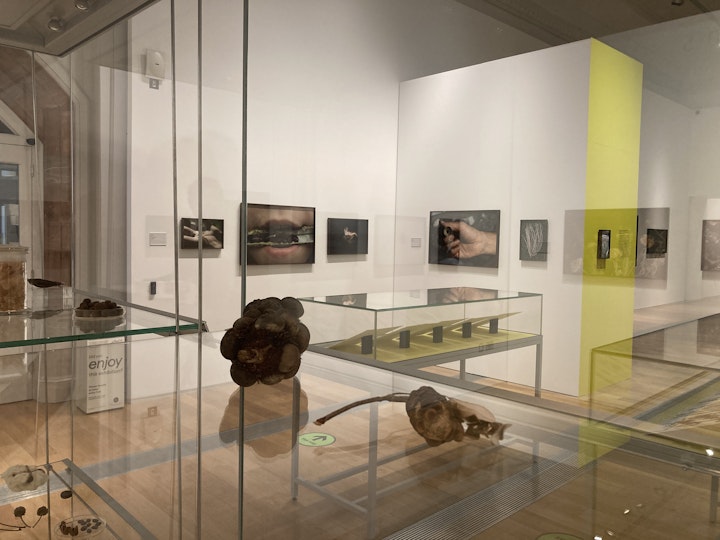Mayflower 400 Leiden conference 26/08/20
The British North American colonies, including the West Indian islands were part of a larger, interdependent British Empire economy. Separate parts of the Empire had different interests but, at least until 1776, were dependent on the other colonies, while being subordinate to the perceived political, diplomatic and economic interests of the metropolis. In particular, there was a very close economic relationship between the New England colonies and the West Indian slave-based sugar economy; the Caribbean islands found it more profitable to devote all their land to sugar production and import foodstuffs and other staples, while the New England colonies needed an export market so that they could purchase manufactured goods from England.
When the Mayflower arrived in 1620, they did not bring any slaves with them, but they did bring the biblical justification for slavery. As Cotton Mather put it:
Slavery was established by the law of God in Israel and, regarding themselves as the Elect of God, New Englanders looked upon the enslavement of the Indians and Negroes as a sacred privilege Divine Providence was pleased to grant His chosen people.
While there was a shortage of labour in New England, the land was not generally suitable for the kind of cash-crop agriculture to which slavery is most suited. An early realization that the price of slaves was greater than the worth of their labour in New England led the puritan participants in the African trade to market their slave cargoes in the plantation colonies instead of bringing them home.
The first reliable reference to enslavement within New England is in 1638, when the governor, John Winthrop speaks of the return to Boston of Captain William Pierce in the Salem ship, Desire, which had gone to Providence Island in the Caribbean with a cargo including some captive Pequod Indians from the war of 1637 who he had sold into slavery there. The Desire returned with a cargo of "salt, cotton, tobacco and Negroes".
The first slave trading vessel from New England to Barbados landed in 1643 and the Eighteenth Century saw the rise of the New England colonies as slave-carriers rather than direct exploiters of slave-labour. This not only played a vital role in maintaining and enabling the expansion of the slave-based plantation system in the British Caribbean, but also underpinned the creation of a New England mercantile oligarchy through the fortunes which this commerce generated.
A division of labour developed amongst the Puritans in the North American colonies, with those who went to the Caribbean specialising in cash-crop plantations and those in New England supplying, servicing and trading with them.
Puritan religious principles were important, but these did not in any way inhibit the desire or ability to make a profit and slavery was the most profitable way to do so. In 1645, John Winthrop's nephew wrote from Barbados to his uncle, who was Governor of the Massachusetts Bay Colony, to say that the island's planters had bought "a thousand Negroes; and the more thay buy, the better able they are to buy, for in a year and a half they will earn (with God's blessing) as much as they cost".
Slavery in the West Indies became essential to the economy of the North American colonies. Once the fur trade had been exhausted by over hunting, New England had nothing that was wanted in England to trade for the manufactured goods they needed. However, they were able to find a market for their horses, timber, candle oil, flour, dried fish and barrels in the West Indies. In 1641, John Winthrop wrote "These straits set our people on work to provide fish, clapboards, planks etc. ... and to look to the West Indies for a trade". Richard Vines, a Puritan doctor from New England who was working in Barbados wrote to John Winthrop in 1647: "Men are so intent upon planting sugar that they would rather buy foode at very deare rates than produce it by labour, soe infinite is the profitt of sugar".
By the early 1680s, the West Indian trade had become the cornerstone of New England commerce involving half the ships entering and leaving Boston.
This trade, aided by co-religionist and family contacts, led to an ambitious programme of ship-building. By 1700, Boston and nearby towns were turning out 70 ships a year.
American-built ships not only dominated the West Indian and Coastwise trades, where they accounted respectively for 96 percent and 93 percent of the ships, but were even important in the shipping coming directly from Africa. On this route, they accounted for 44 percent of the ships, with English-built ships making up the rest.1
Of course the 'shipping coming directly from Africa' was full of enslaved people.
An important triangle went from New England to West Africa with rum, which could be traded for captives in Africa, who it turn could be exchanged for molasses in the West Indies to supply the rum distilling industry in New England. A slave, who could be purchased in Africa for 150 gallons of rum which cost £3 to produce in North America could be sold for between £30 and £80 in Barbados or the southern mainland colonies. These enormous quantities of alcohol had the added advantage, from the slave-traders' point of view, of destabilising epidemic of alcoholism in Africa that vastly increased levels of violence, broke down traditional relationships and thereby facilitated slave-taking. As Boston, Salem and Nantucket becoming the pre-eminent slaving ports in the region, distilling became the largest manufacturing industry in New England. By the Eighteenth Century, Rhode Island had thirty distilleries and Massachusetts had sixty-three, producing 5 million gallons of rum a year.
From the earliest European settlement until the final end of slavery, New England was enmeshed in slavery, albeit at arms' length. As Malcolm X said:
We didn't land on Plymouth Rock. The rock landed on us.
For more information about Danny and Steven's work please go to:
https://mayflowermavericks.wordpress.com/
You can purchase a copy of their well written and illuminating book here:
https://mayflowermavericks.wordpress.com/2019/07/10/get-a-copy-of-telling-the-mayflower-story-book/
















